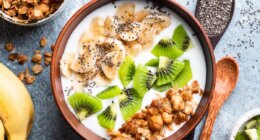
Horseshoe crabs can fluoresce under ultraviolet light. Their eggs are considered a primary fat source for more than a dozen species of migratory shore birds, according to South Carolina’s Department of Natural Resources. What’s more important is their blood!
The endotoxins released by bacteria have the potential to induce inflammation and
. They can also cause venereal disease,
and other diseases. The copper-rich bright blue blood of horseshoe crabs contains immune cells that trap and immobilize these bacterial toxins. This kept the crabs alive for about 450 million years.
‘Limulus Amoebocyte Lysate (LAL), produced from the blood of horseshoe crabs, helps ensure that pharmaceutical products are contaminant-free. Depending solely on the crabs for LAL will put them at the risk of extinction.’
Read More..
By making use of the components present in these clever blood cells, scientists developed a compound called Limulus Amoebocyte Lysate, or LAL and since 1970s, it is helping medical professionals giving out jabs devoid of bad bacteria that could make humans sick. It also helps ensure that biomedical devices are contaminant-free.While this seems incredible, conservationists slam the use of crab’s blood.
Here’s the Story Behind the Life Struggle of Horseshoe Crabs
The harvesting of these crabs is concerned mainly with the coast of South Carolina. This is because Governor Henry McMaster thought it would not be good to depend on foreign countries for pharma needs and have companies like Charles River Laboratories, top-producer of Limulus Amoebocyte Lysatein from horseshoe blood in the United States would be fine.
But conservationists had a different opinion and accused the U.S. Fish and Wildlife Service as it allowed horseshoe crab harvesting in some wildlife areas including South Carolina’s Cape Romain National Wildlife Refuge. After that there was a temporary halt in the harvest but soon, it resumed following Charles River’s appeal.
In addition, the environmental groups have also been asked to withdraw their complaint within August 2021 as federal officials will be permitting commercial activities in the refuge, including horseshoe harvesting. Foster Jordan of Charles River Labs further adds that only 20% of their harvest comes from the refuge, while most coming from further down the South Carolina coast.
READ RELATED: Stomach bloating: Fruit juice you should add to your shopping list to prevent trapped wind
Pharmaceutical companies need to make sure each and every drug or vaccine candidate is contaminant-free. This makes LAL testing, a critical one. And, if all the drug companies continue to rely solely on LAL, horseshoe crab populations will be put at risk. The attempts to produce new and efficient vaccines against COVID-19 have further increased the need for horseshoe crabs and concerns about the sustainability of these creatures are rising.
Does Science Have Anything to Fix This Issue?
Using biotech manufacturing processes, it has been possible to produce the man-made version of LAL called Recombinant Factor C (rFC), which reduces potential impacts to the horseshoe crab community. It is a non-animal-derived reagent used to detect bacterial endotoxins in pharmaceutical products.
Last year, a group of researchers from Eli Lilly, Bristol Myers Squibb, Pfizer and Roche-Genentech published a research report that intended to compare the efficacy of two products limulus amebocyte lysate (LAL) made from horseshoe crab blood and recombinant Factor C (rFC), a synthetic product. The insights provided by the paper did little to publicize the use of this recombinant product.
While the synthetic alternatives to LAL are not widely accepted by the health care industry, Jordan also highlights, “My mission is to make sure that any competitor that comes into the United States, from China or any of these other producers, has to go through the same regulatory process that we had to go through, to make sure that it’s safe. If all these synthetics start coming in from other countries, we’re going to lose the protection that we’ve had for all these years, and the safety, and the control of the drug supply.”
Considering both the safety of ecosystem and increasing pharmaceutical needs across the globe, the issue seems like a house of cards, as the governor mentioned, where every other card falls if we pull out even one part of it. It is important to maintain a healthy balance between scientific demands and the planet’s ecosystem to meet whatever requirements are there to protect any sort of life.
References:
- Horseshoe crab blood: the miracle vaccine ingredient that’s saved millions of lives – (https://www.nhm.ac.uk/discover/horseshoe-crab-blood-miracle-vaccine-ingredient.html)
- Horseshoe Crab – (https://www.nwf.org/Educational-Resources/Wildlife-Guide/Invertebrates/Horseshoe-Crab)
- Bolden J, Knutsen C, Levin J, Milne C, Morris T, Mozier N, Spreitzer I, von Wintzingerode F. Currently Available Recombinant Alternatives to Horseshoe Crab Blood Lysates: Are They Comparable for the Detection of Environmental Bacterial Endotoxins? A Review. PDA J Pharm Sci Technol. 2020 Sep-Oct;74(5):602-611. doi: 10.5731/pdajpst.2020.012187. Epub 2020 Aug 14. PMID: 32817324.
Source: Medindia
Source:










